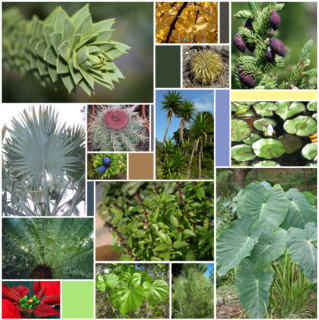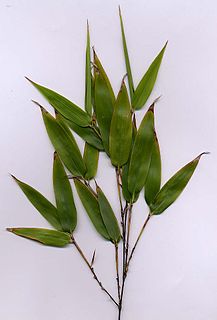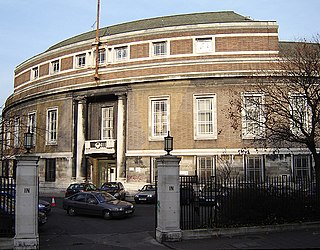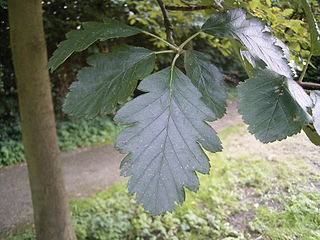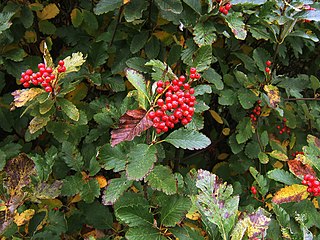| Sorbus latifolia | |
|---|---|
 | |
| Sorbus latifolia, Morton Arboretum Acc. 261-93-5 [1] | |
| Scientific classification | |
| Kingdom: | Plantae |
| Clade: | Angiosperms |
| Clade: | Eudicots |
| Clade: | Rosids |
| Order: | Rosales |
| Family: | Rosaceae |
| Genus: | Sorbus |
| Subgenus: | Sorbus subg. Aria |
| Species: | S. latifolia |
| Binomial name | |
| Sorbus latifolia | |
Sorbus latifolia (the broad-leaved whitebeam [2] or service tree of Fontainebleau; French: alisier de Fontainebleau) is a species of whitebeam that is endemic to the area around Fontainebleau, south of Paris in France, where it has been known since the early eighteenth century. [3] [4] [5]
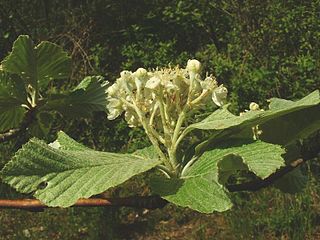
The whitebeams are members of the family Rosaceae, comprising subgenus Aria of genus Sorbus, and hybrids involving species of this subgenus and members of subgenera Sorbus, Torminaria and Chamaemespilus. They are deciduous trees with simple or lobed leaves, arranged alternately. They are related to the rowans, and many of the endemic restricted-range apomictic microspecies of whitebeam in Europe are thought to derive from hybrids between S. aria and the European rowan S. aucuparia; some are also thought to be hybrids with the wild service tree S. torminalis, notably the service tree of Fontainebleau Sorbus latifolia in French woodlands.

Endemism is the ecological state of a species being unique to a defined geographic location, such as an island, nation, country or other defined zone, or habitat type; organisms that are indigenous to a place are not endemic to it if they are also found elsewhere. The extreme opposite of endemism is cosmopolitan distribution. An alternative term for a species that is endemic is precinctive, which applies to species that are restricted to a defined geographical area.

Fontainebleau is a commune in the metropolitan area of Paris, France. It is located 55.5 kilometres (34.5 mi) south-southeast of the centre of Paris. Fontainebleau is a sub-prefecture of the Seine-et-Marne department, and it is the seat of the arrondissement of Fontainebleau. The commune has the largest land area in the Île-de-France region; it is the only one to cover a larger area than Paris itself.


